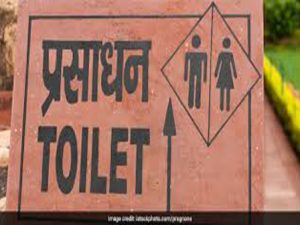COVID-19 and Toilet-use in India: Why Continued Attention is Needed?
There are no guidelines based on faecal--oral transmission of COVID-19 virus, and rightfully so given the lack of evidence to support this transmission pathway. However, given the increased risk of open defecation in public spaces in India, further research should focus on understanding this risk.

Many policy makers are rightfully focusing on bolstering healthcare facilities, ramping up diagnostic testing and surveillance as social distancing measures quieten the crowded streets of India. Eyeing the burden of mortality from Italy, Spain and the US, it is normal to extend that to India’s context where millions live in slums, without access to clean drinking water, other critical sanitation and hygiene facilities, soap, and the privilege to distance themselves from others. Policy makers speculate about gaps in preparedness and bemoan measures taken too late. As an epidemiologist who has been following the Modi administration’s concerted efforts for the last decade to make sanitation accessible to everyone, there are several sanitation-related aspects that need attention when directing COVID-19 preventive measures in the coming weeks and months. While there is lot to talk about when it comes to COVID-19, I’ll focus on sanitation and using toilets—something that has been the prime public health agenda in India in the current decade.
In many countries that COVID-19 made headlines so far, the access of improved flush toilets connected with sewers is assumed. However, this is not the norm for many developing countries. India is unique because it has recently transitioned millions of people who previously defecated in the open to using toilets. While many now have individual toilets thanks to the Swachh Bharat Abhiyan, millions in urban slums depend on community or pay per use public toilets. The downside of using them includes long queues, recurrent use costs, and unhygienic conditions due to poor maintenance. The COVID-19 crisis intensifies these specific challenges.
Also Read : Covid 19 In India Immense Role For Healthcare Field Workers
The novel COVID-19 is particularly contagious, spread through respiratory droplets and contact through contaminated surfaces. In order to control infection within households and health facilities, World Health Organization (WHO) emphasizes that for COVID-19 cases “faeces must be treated as a biohazard and handled as little as possible given documented cases where viruses were shed in faeces”. If we extend WHO’s COVID-19 infection control measures to community or public toilets, it should be ensured that there is designated cleaning staff with proper personal protective equipment (PPE), who regularly disinfects the toilets and also practices proper hand hygiene to minimise their own risk. In the absence of commitment to adequately disinfect public and community toilets, they might transform into COVID-19 transmission hot spots for general users. WHO also correctly underlines the attention needed “to safely managing human excreta throughout the entire sanitation chain, starting with ensuring access to regularly cleaned, accessible, and functioning toilets or latrines and to the safe containment, conveyance, treatment, and eventual disposal of sewage”.
The commitment to safe waste disposal post toilet emptying practices also needs renewed focus to impose these guidelines.

In addition, as behavioural scientists will point out that recent adopters of toilets are prone to ‘behavioural slippage’ that describes their regression or relapse to previous unhygienic preferences. Stabilising these behaviours as habits requires behavioural maintenance strategies, which require stable infrastructures that allow them to practice the behaviour with ease. During this COVID-19 outbreak, with ample knowledge of social distancing measures, many will be motivated to avoid the queues and be wary of using contaminated spaces for defecation. This might inadvertently lead to increases in inconsistent toilet use and increase in open defecation practices. Careful messaging is required to engage shared toilet users and reassure them of measures being taken to assuage public health concerns regarding COVID-19 risks.
An estimated 2–10 per cent of confirmed COVID-19 cases have diarrhoea, which intensifies the need to use convenient toilets. Studies such as “Evidence for gastrointestinal infection of SARS-CoV-2” have reported that infected patients can shed the virus in their faeces, though it is not clear if the virus is viable for active transmission. Currently there are no guidelines based on faecal–oral transmission of COVID-19 virus, and rightfully so given the lack of evidence to support this transmission pathway. However, given the increased risk of open defecation in public spaces in India, further research should focus on understanding this risk.
Also Read : Containing The Deadly Covid 19 Viability Of Pooling Technologies
In India and elsewhere, there is a justifiable dilemma whether promoting continued use of shared or public toilets is moral if the unhygienic premises are spreading grounds for a much more serious disease like COVID-19. The panic and perceived risks from COVID-19 is powerful. Indeed, one might reason that it is acceptable to forego using shared toilets at this moment, letting many choose to defecate in the open. This will undeniably diminish the extraordinary investment India made to achieve open defecation free status nationwide.
Containment of faeces is assumed in developed countries and was not focused on the transmission of COVID-19 virus yet. India might be different. WHO has interim guidelines for WASH practitioners. Any robust inclusive COVID-19 control strategy in urban India and low-income communities should include enhanced sanitation facility management and messages to promote safe usage.
(Sania Ashraf is an epidemiologist at the Center for Social Norms and Behavioral Dynamics, University of Pennsylvania, USA. The group focuses on behaviour change strategies and is currently working to improve exclusive toilet use in India.)
